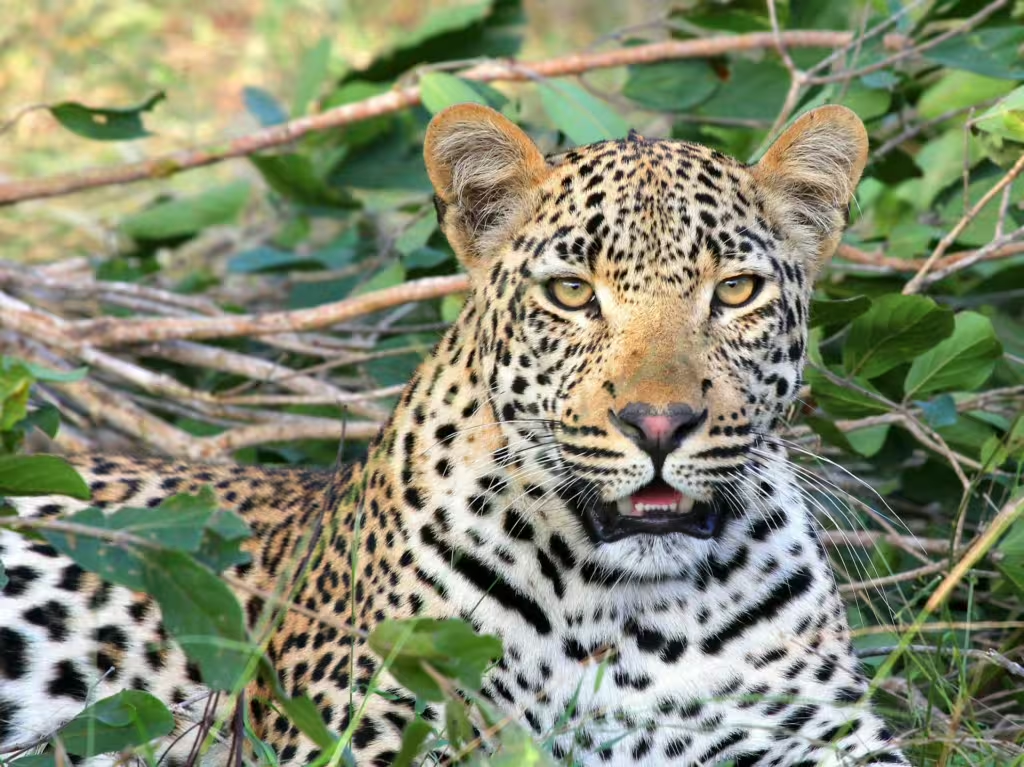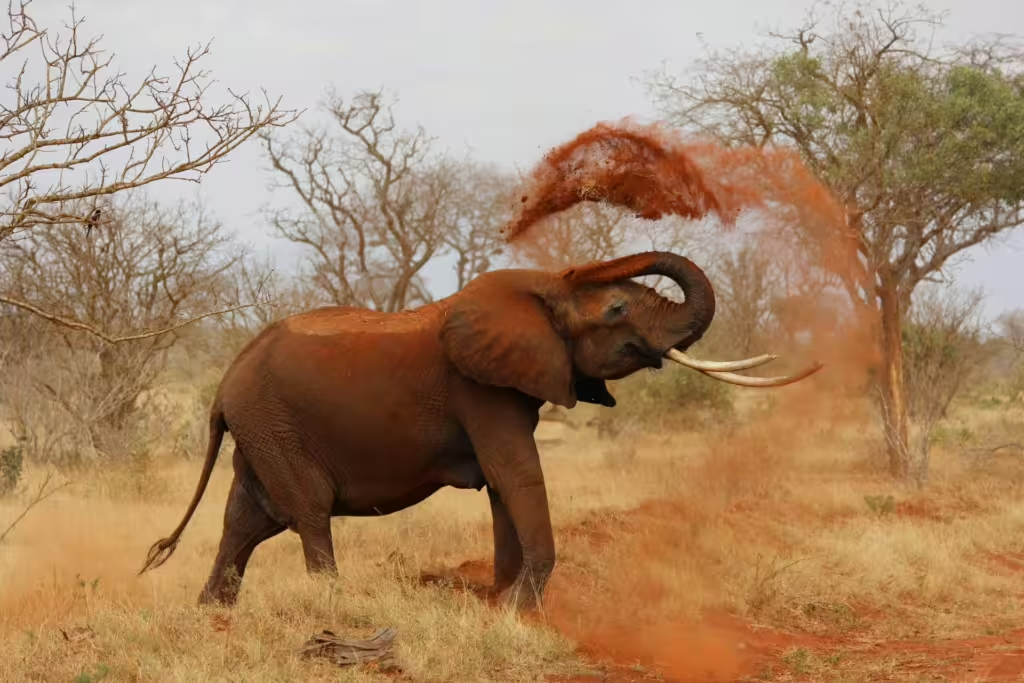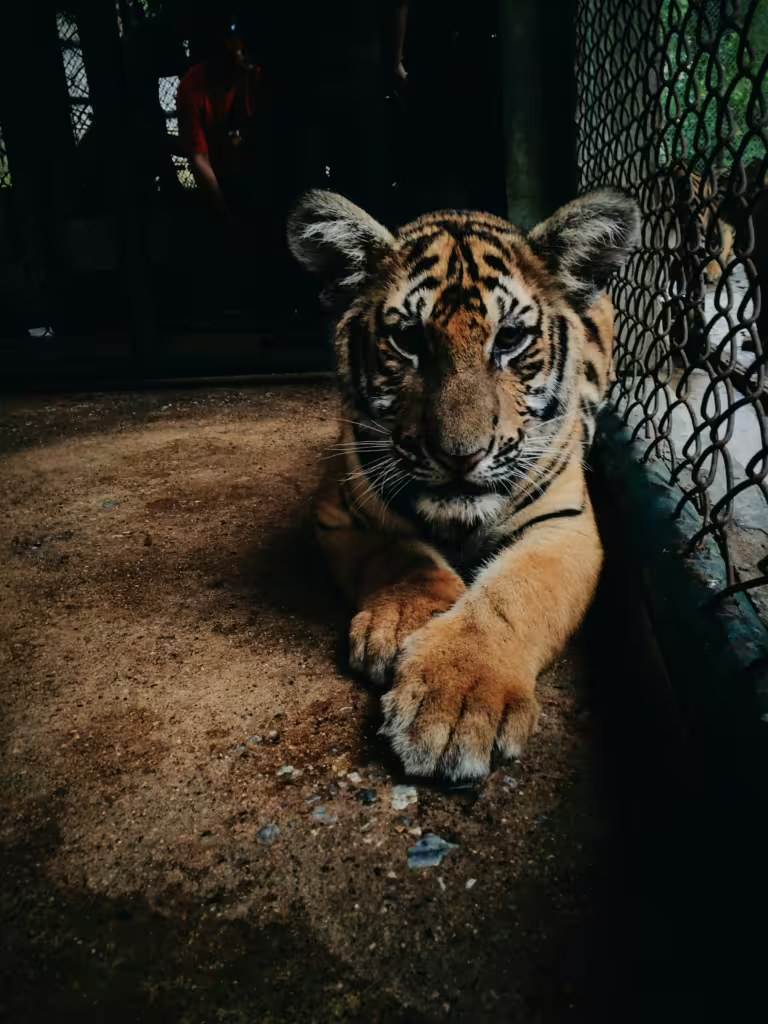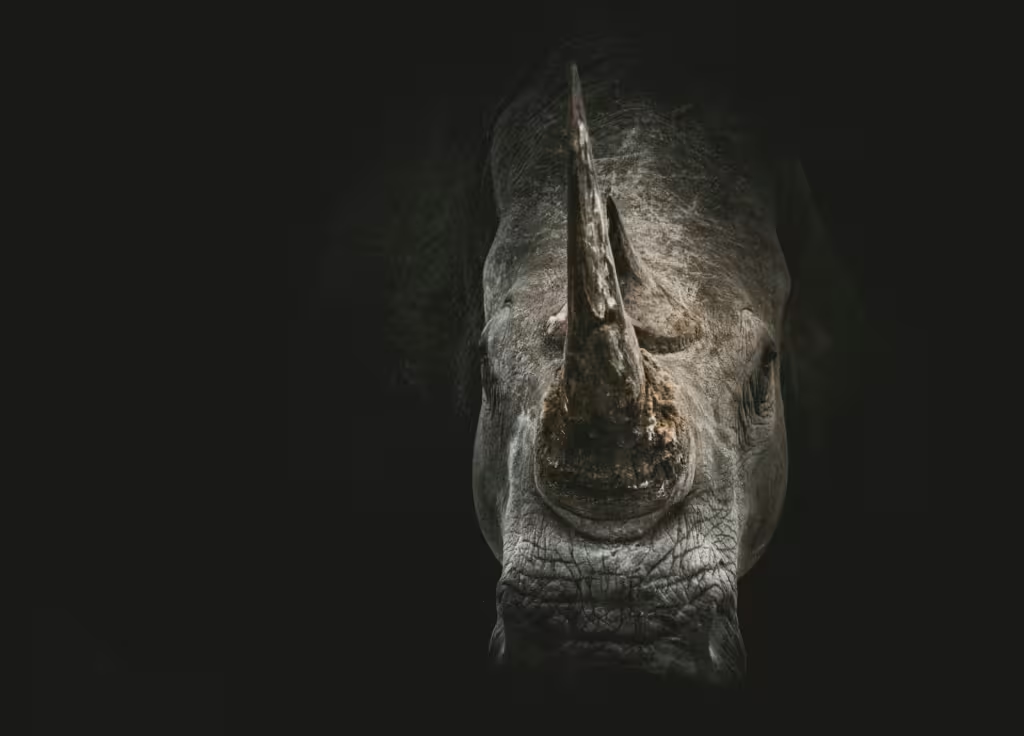We talk a great deal on this page about the plight of our world’s plants and animals. We discuss how climate change is wreaking havoc over terrestrial and marine ecosystems all over the planet. We’ve gone into detail about how habitat destruction, generally caused by the unchecked engine that is human infrastructural advancement, is endangering the future of thousands of plant and animal species. We’ve even talked about how the exotic pet and plant trades are removing wild species from their native habitats, decreasing populations and upsetting the ecological balance of those wild places. And today, we’re finally going to talk about poaching.
For nature lovers, there are few human acts so abhorrent as poaching. Poaching, by which we mean the illegal hunting, capturing, and killing of animals, has been the cause of animal extinctions since we first learned to hold a spear. Even today, after millennia of cultural evolution and scientific understanding, poaching is still rampant, and it’s pushing many species to the brink of extinction. Rhinos, leopards, tigers, elephants, and countless other animals are still being targeted for their “valuable” parts, and for very little reason beyond human greed.
Whether the poachers are looking to sell the animals’ horns, skins, tusks, or bones for a profit, or utilize them for some inscrutable, occult purpose, the fact is that animals are dying for very stupid reasons. It doesn’t matter whether your culture believes rhino horns to be a cure for male reproductive dysfunction or even if they actually are a cure for such troubles, driving rhinos to extinction to fix a problem that viagra could easily solve, is senseless, evil, and wrong.
The truth is, it isn’t just the individual species being poached that suffer from the result of needless overhunting, The consequences of poaching extend far beyond individual concerns, affecting ecosystems, economies, and in may cases, local communities. This illegal activity not only undermines biodiversity, it threatens the intricate balance that exists in nature.
In this article, we will explore the devastating impact that poaching has had on several endangered species. We will discuss the crisis at large and work to present some actionable steps that may yet address this critical issue. Be prepared though, dear readers, this article is not for the faint of heart.
Rhinos: Victims of the Horn Trade
Most of us know what a rhino looks like. These iconic animals are interwoven into our history, mythology, and pop culture. Whether as a brand mascot or a cartoon character, humanity loves its rhinos…or at least, it would appear that way from a distance. Look into the situation a little deeper and you’ll see the real story; that nearly every one of the five living species of rhino on this planet are slowly headed toward extinction because of our avarice and misguided beliefs.
Despite how unique and fascinating rhinos are, they are also counted among the most heavily targeted species when it comes to illegal poaching. This is mostly due to the high demand that people have for their horns, which are falsely believed to have medicinal properties by many cultures. Despite only being made of keratin—the same material as human nails, incidentally—rhino horns are highly sought after in traditional medicine markets all over Asia. Despite their consistently endangered status, the demand for rhino horns has actually escalated in recent years, forever fueled by myths of their supposed healing abilities and their status as a luxury item in some circles
- Species Impacted: The black rhino and white rhino are the primary victims of this rampant rush for rhino horn. The smaller, Asian species, namely the Javan and Sumatran rhinos are also critically endangered, however. To make matters worse, these animals are even targeted whilst living in the border of protected reserves! In these situations, poachers will utilize advanced weaponry and technology in order to evade anti-poaching patrols.
- Current Status: Over the past 100 years, rhino populations have plummeted. Some varieties have even effectively gone extinct in that time, with the western black rhino going the way of the dodo as recently as 2011. This was not a habitat loss or climate change event, either, it was strictly the result of poaching. In South Africa alone, thousands of rhinos have been slaughtered by heedless poachers in recent history.
- Ecosystem Effects: Rhinos, like elephants and hippos, are ecosystem engineers within their habitats. This is a result of their grazing behaviors, which shape the landscape, benefiting countless other species that live in the same or adjacent ecosystems. Without rhinos, grasslands and savannas run the risk of becoming overgrown or imbalanced, vastly impacting the lives of other herbivores and predators alike.
Conservation efforts, such as anti-poaching patrols, horn devaluation techniques, and community education programs, have shown promise in recent years, but progress is slow; perhaps too slow for the rhinos. At the same time, the battle against poaching remains a significant challenge to the remaining rhinos, and combating it requires global cooperation and sustained effort that most governments don’t seem to have time for.
Leopards: The Silent Victims

Leopards are charismatic apex predators whose iconic coats make them a favorite of animals lovers and fashion enthusiasts alike. Sadly, the beautiful spotted coats of these normally elusive predators have made them prime targets for poachers. What some folks might not know is that these big cats are also killed for their bones, which are used as substitutes for tiger bones in traditional medicine. Whether for bones and skin, the illegal trade of leopard parts has placed immense pressure on existing leopard populations, pushing them toward critical endangerment in many of the regions they call home.
- Species Impacted: African and Asian leopards are the most commonly poached of the bunch, though other relatives are also sought out for their skin and bones. In fact, subspecies like the Amur leopard are actually critically endangered. In parts of Africa, leopards are hunted as trophies or for their body parts used in ceremonial attire and rituals.
- Current Status: The Amur leopard is usually found in Russia and China, or it would have been in ages past. Today, this species has fewer than 120 individuals left in the wild. The combination of habitat loss due to deforestation and human encroachment only compounds the issues they face because of poachers.
- Ecosystem Effects: Like tigers, leopards are apex predators in their ecosystems. These animals are essential for regulating prey populations, which maintains the balance of their ecosystems. Their slow decline has already created overpopulation issues among certain prey species, which in turn affects vegetation and other local wildlife.
Unfortunately, the illegal wildlife trade, along with habitat loss and human-wildlife conflict, continues to threaten leopards all over the world. Urgent action is needed if we hope to curb poaching and slow the decline. Additional conservation strategies also need to be brought to bear that will protect their habitats and ensure their continued survival.
Tigers: Striped Survivors on the Brink
If leopards are in danger, then tigers are facing double trouble. For many, the tiger is an iconic symbol of strength and beauty, but these mighty cats are perilously close to extinction in just about every ecosystem they call home. Whether by habitat destruction or unchecked poaching for their skins, bones, and other body parts, the tiger is in grave danger. The most sought-after parts of these animals are highly valued in illegal markets, making them an irresistible for any greedy poacher foolish enough to seek them out. The thing is, the tiger’s reputation, beauty, and cultural significance are all of its greatest enemies. Tiger parts are so coveted in traditional medicine as symbols of power, which has only exacerbated the demand that many people have for these majestic animals.
- Species Impacted: All tiger subspecies, including the Bengal, Siberian, and Sumatran tigers, have been targeted by poachers. Subspecies like the Malayan and Indochinese tigers are already so far gone that they face critical endangerment, their populations having dwindled alarmingly in recent decades.
- Current Status: Over the past century, the global tiger population has declined by over 95%; if that sounds alarming, it’s because it is, though it’s not exactly unheard of. Humans hunted the dodo bird to extinction in less than 80 years! Meanwhile, in the last several centuries, three subspecies of tiger—the Bali, Javan, and Caspian tigers—have already gone extinct. Habitat fragmentation and human encroachment further isolate tiger populations, making them even more vulnerable to the opportunistic and cannily resourceful poachers of the modern age.
- Ecosystem Effects: Tigers aren’t just apex predators, they are keystone species that ensure the continued health of their ecosystems. The loss of tigers can cause overpopulation, destabilizing entire food chains and leading to negative cascading effects on biodiversity.
International efforts, such as the Global Tiger Recovery Program, are already in place and doing good work. However, poaching remains a significant obstacle and it’s happening faster than the tigers can recuperate. The truth is, stricter enforcement of anti-poaching laws is not just required, it may be the only way to fix things. Either way, stronger international cooperation is needed to make it work.
Elephants: Giants Under Siege
Elephants have long been one of the most iconic victims of poaching. These majestic giants are killed primarily for their ivory tusks, with poachers often leaving the rest of the deceased animal to rot upon the savanna. Despite international bans on ivory trade, the demand for this rare and costly material persists, driven by markets in Asia and beyond. The thing is, the wholesale slaughter of elephants not only threatens the survival of the species, but the chaotic disruption of the social structures of their highly-organized herds.
- Species Impacted: African and Asian elephants are both targeted for their tusks, with forest elephants facing particularly severe declines on recent years. In some regions, entire herds have known to be wiped out in a single, wanton poaching event. It’s shocking and disgusting to think of such a thing happening, but the fact that it is true makes it all the more tragic.
- Current Status: African elephant populations have dropped by over 60% in the past 100 years, and Asian elephants face similar threats. Forest elephants, a subspecies of the African elephant, have seen an even greater population decline in recent decades, coming in at a whopping 86% !
- Ecosystem Effects: Elephants are ecosystem engineers and keystone species. Their tusks create water holes, their dung dispersing seeds, and their eating habits maintain savanna and forest ecosystems. Their absence could lead to significant ecological changes across the Asian and African continent, affecting flora and fauna of all kinds.
Community-based conservation programs and stricter enforcement of ivory bans have become absolutely essential to ensuring the survival of these gentle giants, but these things are not happening. That said, public awareness campaigns highlighting the consequences of ivory trade has played a key role in reducing demand for the stuff.

The Human Cost of Poaching
The impact of poaching isn’t limited to the animals or the surrounding wildlife. It also affects local communities, economies, and global security:
Economic Loss: Wildlife tourism generates billions annually, and the loss of the planet’s most iconic species undermines this revenue stream in a big way; why go to Africa if you can’t see an elephant? Moreover, many local communities depend on ecotourism to function. These people suffer directly when poaching depletes wildlife populations.
Community Impact: Poaching often involves organized crime networks, who tend to have no qualms about exploiting vulnerable communities or creating dangerous conditions for locals. In some cases, anti-poaching rangers have even lost their lives defending animals whole engaged in violent encounters with poachers.
Global Security: The illegal wildlife trade is sometimes linked to broader criminal activities, including drug trafficking and terrorism. The profits from poaching can often be funneled off to fund future illicit operations like these. The result is a cycle of violence and instability that almost never ends.
Solutions and Hope for the Future
While the challenges are immense, there is hope for these animals and the affected communities. Governments, NGOs, and individuals are working tirelessly to combat poaching and protect endangered species by strengthening laws, involving communities, and increasing public awareness. The adoption of new technology, like drones, camera traps, and GPS monitoring, have helped to shed light on poachers, but if we have the tech to stop then, they can find the tech to undermine us. Thus the cycle and arms race continues, and the ones who truly suffer, are the animals themselves.

True Investigator Says…
As you can see, poaching is a global crisis that requires immediate and sustained action. These animals weill not be long for this world if we don’t do what we can to put a stop to these terrible people. The time to act is now, though, because if we don’t do something soon, there won’t be enough of the rhinos, tigers, and elephants of the world, to make a difference.
Discover more from TrueInvestigator
Subscribe to get the latest posts sent to your email.


